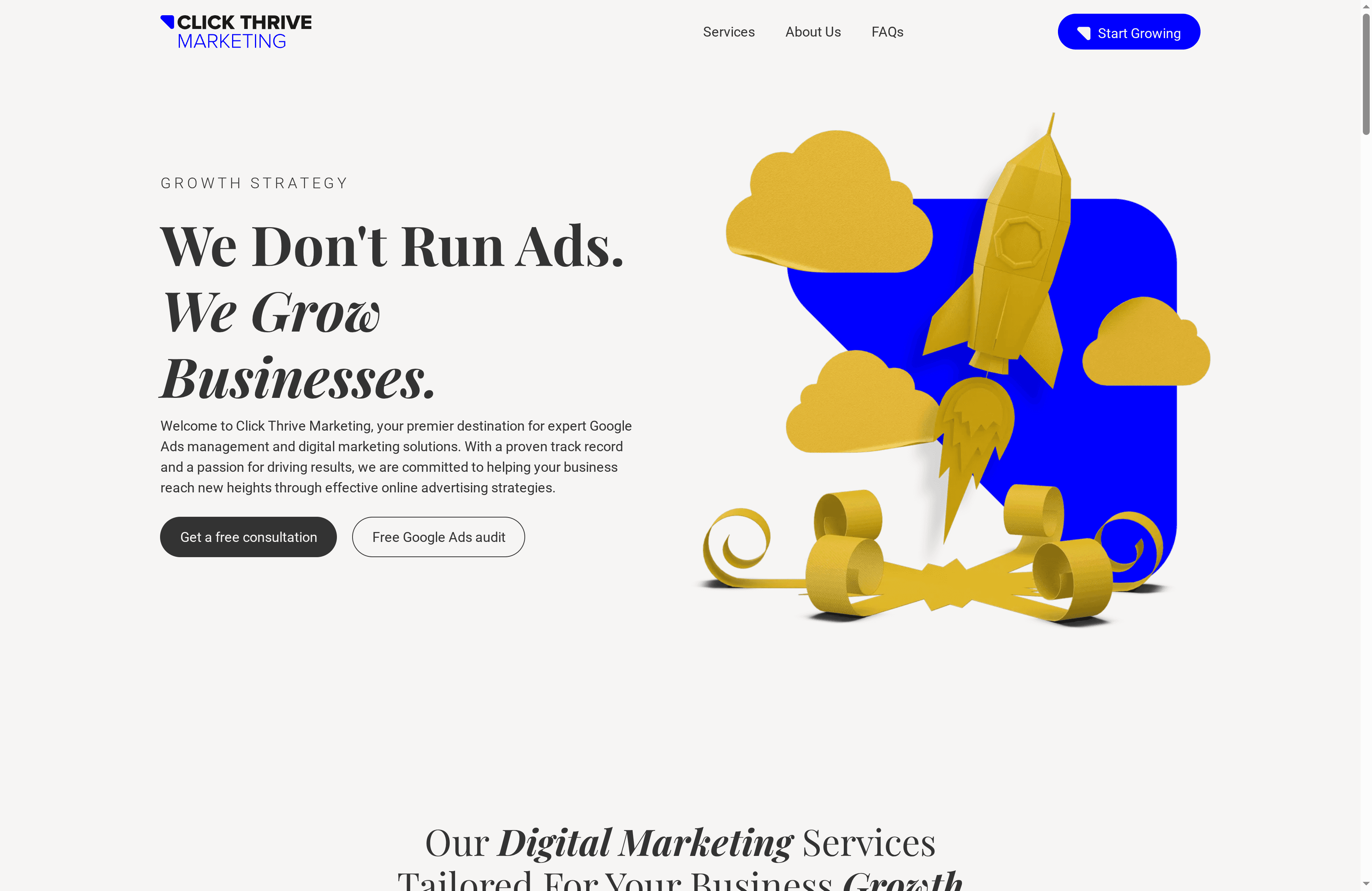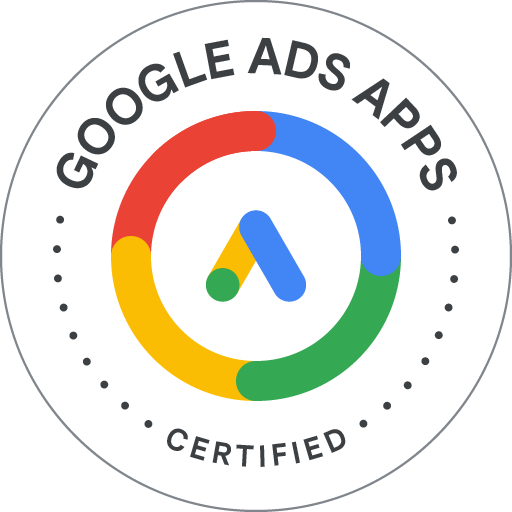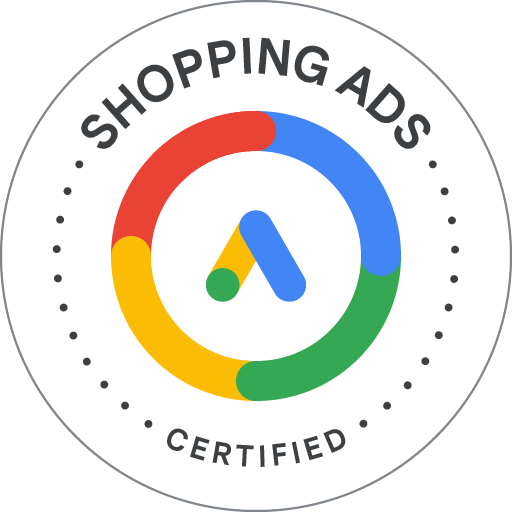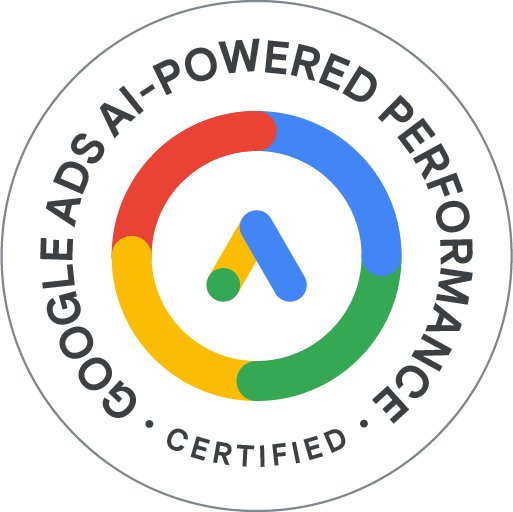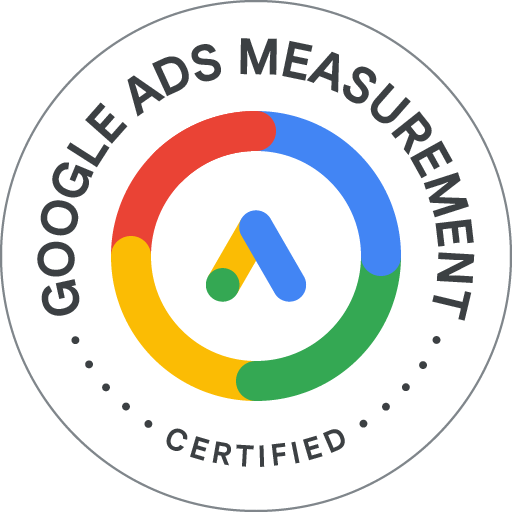Over 90 percent of online shoppers say they leave a website if they cannot find what they need quickly. Clear navigation, compelling calls to action, and a smooth user journey make all the difference between a visitor and a loyal customer. Whether you run a small business or manage a growing online brand, making your website easier to use unlocks real results. This guide brings you the proven strategies that turn clicks into customers and browsers into buyers.
Table of Contents
- 1. Simplify Your Website Navigation For Easy Access
- 2. Use Strong And Clear Calls To Action On Every Page
- 3. Optimize Landing Pages For Relevance And Speed
- 4. Test Different Ad Copy And Images To Improve Engagement
- 5. Leverage Social Proof Through Reviews And Testimonials
- 6. Use Targeted Offers To Capture High-Intent Leads
- 7. Track And Analyze User Behavior For Ongoing Improvements
Quick Summary
| Takeaway | Explanation |
|---|---|
| 1. Simplify website navigation | Clear navigation helps visitors find information quickly, enhancing user experience and reducing frustration. |
| 2. Utilize strong calls to action | Clear, actionable CTAs on each page direct users towards desired actions, improving conversion rates. |
| 3. Optimize landing pages for speed | Fast-loading, relevant landing pages are crucial for making a strong first impression and increasing conversions. |
| 4. Leverage social proof | Showcasing genuine customer testimonials builds trust and encourages potential buyers to engage with your business. |
| 5. Track user behavior effectively | Analyzing user interactions helps you understand customer preferences, guiding continuous website improvements. |
1. Simplify Your Website Navigation for Easy Access
Your website navigation is the roadmap that guides potential customers through your digital storefront. Without a clear path, visitors become frustrated and quickly abandon their journey. According to U.S. Department of Health and Human Services, creating simple and consistent website navigation helps users find information quickly.
Great navigation is about understanding user behavior and removing unnecessary complexity. Think of your website like a physical store where customers should easily find what they need without feeling overwhelmed. This means organizing your menu items logically, using clear language, and minimizing the number of clicks required to reach important information.
To implement an effective navigation strategy, start by mapping out your core user paths. Ask yourself: What do most visitors want to accomplish? Typically, this includes learning about your services, checking pricing, reading testimonials, or contacting your business. Arrange your main menu to prioritize these key actions.
Practical navigation improvements include:
- Limit main menu items to 5-7 options
- Use descriptive labels that clearly explain each section
- Place critical information within 2-3 clicks from the homepage
- Ensure mobile responsiveness for seamless navigation across devices
Harvard Web Publishing demonstrated how streamlining navigation paths can dramatically improve user experience. By focusing on intuitive design, you reduce visitor frustration and increase the likelihood of converting browsers into potential customers.
Remember that navigation is not just about aesthetics its about creating a frictionless journey that guides visitors exactly where they want to go. Test your website navigation from a user perspective and continuously refine the experience.
2. Use Strong and Clear Calls to Action on Every Page
A call to action is the digital equivalent of a storefront signage that tells visitors exactly what to do next. According to University of California Merced, small businesses should use clear and compelling calls to action on every page to guide users toward desired actions and enhance conversion rates.
Effective CTAs are more than just buttons. They are strategic prompts that create a sense of urgency and provide a clear pathway for potential customers. Your CTA should answer one fundamental question for the visitor: “What do I do next?”
When crafting CTAs, focus on creating compelling and action-oriented language. Instead of generic phrases like “Click Here,” use specific instructions that communicate value. For instance, replace “Submit” with “Get My Free Consultation” or “Unlock My Discount” to make the action more enticing.
Key strategies for powerful CTAs include:
- Use contrasting colors that stand out from your website design
- Place CTAs in prominent locations on each page
- Create a sense of urgency with time-sensitive language
- Make buttons large enough to be easily clickable on mobile devices
Utah State University emphasizes that clear CTAs can significantly improve user experience by helping visitors find resources more efficiently. This means your CTA should be both visually striking and contextually relevant to the page content.
Remember that every page on your website is an opportunity to guide a potential customer toward conversion. Test different CTA designs, monitor their performance, and continuously refine your approach to maximize engagement and results.
3. Optimize Landing Pages for Relevance and Speed
Your landing page is the digital storefront that can make or break a potential customer’s first impression. According to research on multivariate optimization, crafting a landing page is about striking the perfect balance between visual appeal and functional performance arXiv Research.
A high converting landing page needs two critical elements: relevance and speed. Relevance means your page speaks directly to your visitor’s needs and expectations. Speed ensures they can access that information quickly without frustration. Think of it like a well organized store where everything is exactly where a customer expects it to be and can be found instantly.
Landing page optimization is a strategic process that requires careful attention to multiple elements. Your page should load within 2 seconds and communicate your core value proposition immediately. This means eliminating unnecessary graphics, streamlining text, and ensuring your messaging matches the ad or link that brought the visitor to your page.
Key optimization strategies include:
- Minimize image file sizes to improve loading times
- Use clear and concise headlines that communicate value instantly
- Ensure mobile responsiveness across all devices
- Remove unnecessary form fields that might discourage conversion
Research on user conversion arXiv Research suggests making gradual adjustments to landing pages can significantly enhance both relevance and user experience. This means continuously testing and refining your page elements based on real user data.
Remember that your landing page is a dynamic tool. What works today might need adjustment tomorrow. Regular analysis, A/B testing, and a commitment to understanding your audience will help you create landing pages that not only look great but convert visitors into customers.
4. Test Different Ad Copy and Images to Improve Engagement
Testing ad copy and images is like conducting a scientific experiment for your marketing strategy. According to arXiv Research, using advanced algorithms can help businesses dynamically test different ad variations to improve user engagement and conversion rates.
Effective ad testing is about understanding your audience’s psychological triggers. What makes someone click? What imagery resonates? What words spark curiosity? These questions are at the heart of successful ad optimization. Not all audiences respond the same way some prefer direct language while others appreciate storytelling.
The key to successful testing is creating multiple variations of your ad content. This means developing different headlines, images, and calls to action that speak to similar core messages. Your goal is to discover which combination generates the most interest and drives the most conversions.
Practical ad testing strategies include:
- Create 3 5 variations of each ad element
- Test one variable at a time (headline, image, or call to action)
- Run tests for at least two weeks to gather meaningful data
- Use analytics to track click through and conversion rates
Research on visual interfaces suggests finding a delicate balance between capturing attention and maintaining a positive user experience. This means your ad variations should feel professional and aligned with your brand while still being distinctive enough to stand out.
Remember that ad testing is an ongoing process. What works today might not work tomorrow. Continuous experimentation and a willingness to adapt are the hallmarks of successful digital marketing strategies.
5. Leverage Social Proof Through Reviews and Testimonials
Social proof is the digital equivalent of word of mouth marketing that can transform potential customers into confident buyers. University of California Merced recommends that small businesses strategically showcase customer reviews to build trust and credibility.
Customer testimonials are powerful psychological triggers that help reduce purchasing anxiety. When potential customers see real people sharing positive experiences about your product or service they feel more comfortable taking the next step. Its human nature to seek validation from others before making a decision.
Effective social proof goes beyond just collecting random reviews. You want to curate testimonials that speak directly to specific customer pain points and demonstrate tangible results. A generic “great service” review is far less compelling than a detailed account of how your business solved a specific problem.
Strategies for leveraging social proof include:
- Display testimonials prominently on your website
- Include specific details like customer names and businesses
- Use video testimonials for increased authenticity
- Rotate testimonials to keep content fresh and engaging
Utah State University emphasizes that social proof can significantly enhance user trust and encourage engagement. This means your testimonials should feel genuine not staged or overly polished.
Remember that social proof is an ongoing conversation. Continuously collect feedback encourage satisfied customers to share their experiences and demonstrate the real world value of your business.
6. Use Targeted Offers to Capture High-Intent Leads
Targeted offers are the precision instruments of digital marketing that transform casual browsers into committed customers. arXiv Research highlights how personalized content and strategic offers can dramatically improve conversion rates by capturing high intent leads.
High intent leads are like gold for small businesses. These are potential customers who are not just window shopping but are actively seeking solutions to their problems. Your targeted offer is the key that unlocks their purchasing decision by demonstrating exactly how you can solve their specific challenge.
The magic of targeted offers lies in their specificity. Generic promotions fall flat because they speak to everyone and no one simultaneously. Instead create offers that feel like they were crafted specifically for a particular customer segment. This means understanding your audience deeply their pain points desires and motivations.
Effective targeted offer strategies include:
- Segment your audience based on behavior and demographics
- Create unique offers for different customer types
- Use time limited promotions to create urgency
- Match offer language to specific customer needs
Research on user conversion suggests that targeted offers work best when they align closely with individual user preferences and behaviors. This means continuously analyzing your data and refining your approach.
Remember that a great targeted offer feels less like a sales pitch and more like a personalized solution. The goal is to make potential customers feel understood not sold to.
7. Track and Analyze User Behavior for Ongoing Improvements
Think of tracking user behavior as having a secret window into your customers minds. According to arXiv Research, understanding user navigation behavior is critical for continuously improving website design and functionality.
Data is the compass that guides smart business decisions. Every click scroll and interaction tells a story about what your customers want and how they interact with your website. This isn’t about collecting random numbers its about uncovering meaningful patterns that reveal customer preferences and pain points.
Effective user behavior tracking goes beyond simple page views. You want to understand the complete customer journey from the moment they land on your site to the point of conversion. Which pages do they spend the most time on? Where do they typically drop off? What paths lead to successful conversions?
Key strategies for tracking user behavior include:
- Use Google Analytics to monitor website traffic
- Set up conversion funnels to track user journeys
- Implement heat mapping tools to visualize user interactions
- Conduct regular user experience audits
Research on web navigation interfaces emphasizes the importance of analyzing user interactions to continuously adapt and enhance website performance. This means treating your website as a living system that evolves based on real user data.
Remember that tracking user behavior is not a one time task. Its an ongoing process of listening learning and adapting. The most successful businesses are those that turn user data into actionable insights.
Below is a comprehensive table summarizing the strategies for optimizing website navigation, calls to action, landing pages, ads, social proof, offers, and user behavior discussed throughout the article.
| Strategy | Implementation | Expected Results |
|---|---|---|
| Simplify Website Navigation | Map user paths, limit menu items to 5-7, use clear labels, ensure mobile responsiveness. | Improved user experience, reduced frustration, higher conversions. |
| Strong Calls to Action | Use contrasting colors, create urgency, place in prominent locations, ensure mobile clickability. | Enhanced engagement and conversion rates. |
| Optimize Landing Pages | Minimize image sizes, use concise headlines, ensure quick loading and mobile responsiveness. | Better relevance, increased user satisfaction. |
| Test Ad Copy and Images | Create multiple variations, test one variable at a time, use analytics for data tracking. | Improved user engagement, higher conversion rates. |
| Leverage Social Proof | Display testimonials prominently, use video testimonials, include customer details. | Increased trust and credibility, enhanced user trust. |
| Use Targeted Offers | Segment audience, create specific offers, utilize time-limited promotions. | Higher conversion rates, captured high-intent leads. |
| Track User Behavior | Use tools like Google Analytics, set up conversion funnels, conduct user experience audits. | Continuous website improvements, better understanding of user preferences. |
Boost Your Small Business Conversions with Proven Strategies
Small business owners often struggle with turning website visitors into paying customers despite their hard work in building an online presence. This article highlights common challenges like simplifying navigation, crafting strong calls to action, optimizing landing pages, and leveraging social proof — all critical steps toward increasing your conversion rate. These goals align perfectly with what Click Thrive Marketing delivers through expert Google Ads management and lead generation designed specifically for growing businesses.
Don’t let potential customers slip away because of unclear messaging or slow pages. With over $30 million managed in Google Ads spend, we specialize in improving your campaign performance and customer engagement. Our approach means faster loading times, targeted offers, and data-driven optimization tailored to your audience’s needs.
Explore more insights related to optimizing digital marketing in our Uncategorized category.
Ready to transform browsers into loyal customers? Visit Click Thrive Marketing now for a customized plan that maximizes your ROI. Don’t wait — every moment lost could be a missed lead. See how our lead generation strategies and precise campaign optimizations can skyrocket your conversions today.
Frequently Asked Questions
What are the best methods to simplify website navigation for better conversion rates?
To simplify website navigation, limit your main menu items to 5-7 options and use clear, descriptive labels. Organize your menu based on core user paths to enhance usability and direct visitors efficiently to vital information.
How can I create strong calls to action that improve conversion on my website?
To create strong calls to action, use clear, action-oriented language that communicates value, such as “Get My Free Consultation” instead of generic phrases. Ensure your CTAs stand out visually and are placed prominently, so visitors know exactly what action to take next.
What should I consider when optimizing a landing page for better conversion rates?
When optimizing a landing page, ensure it loads quickly—ideally within 2 seconds—and that the content is relevant to the visitor’s needs. Incorporate clear headlines that convey value and streamline the design by removing unnecessary graphics or form fields.
How often should I test ad copy and images to enhance engagement?
Regularly test ad copy and images at least every two weeks to gauge which variations generate the most clicks and conversions. Focus on altering one element at a time and analyze results to make data-driven decisions for future campaigns.
How can I effectively use social proof like reviews and testimonials to boost trust?
Display customer testimonials prominently on your website, using specific details like customer names and businesses to enhance credibility. Consider rotating testimonials periodically to keep content fresh and engaging for potential customers.
What steps can I take to track and analyze user behavior on my website?
To track and analyze user behavior, set up Google Analytics to monitor traffic patterns and create conversion funnels to understand user journeys. Conduct regular audits and implement heat mapping tools to visualize interactions and identify areas for improvement.
Recommended
- 7 Google Ads Best Practices Every Local Business Needs – Click Thrive Marketing
- 7 Real Examples of Google Ads Campaigns for Business Growth – Click Thrive Marketing
- Performance Marketing Process for Maximizing ROI Results – Click Thrive Marketing
- Click Thrive Marketing – Click Thrive Marketing
- 7 Essential Management Consulting Tips for Small Businesses – Stratgetic IT Consultants for Accountants
